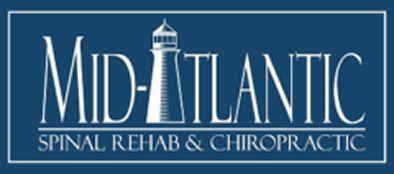Apportionment of Baltimore Auto Accident Injuries
As many of my avid blog followers already know, I spend a good amount of my time treating and therefore blogging about injuries associated with Baltimore auto accidents. Typically the mechanisms of these injuries are fairly straight forward (front end impact, rear-end impact, side swipe, T-bone, etc) and the resultant injuries are fairly straight forward (neck pain, back pain, headaches, whiplash, etc.). However, as I eluded to in my previous blog post about injuries to rat intervertebral discs, injured patients do not live in a bubble or vacuum. That is, they are healing from the moments immediately following their injuries up until around a year after their initial injury, whether or not they are still undergoing care. That is, they can be thought of as “pre-weakened” following their initial injuries. In the vast majority of situations the injured patients are able to make complete recoveries given enough time and therapy. However, some of my patients are not so fortunate. I would estimate that approximately 3-5% of my patients that are treating for motor vehicle collision injuries will be injured in a subsequent crash within six months.
For reasons discussed in the previous blog post, this is a bad thing. Patient’s injuries do not “reset to 0”. Instead, the secondary set of traumatic forces will usually injure the patient to a level that was worse than before their first crash. So while I am willing to treat them for their second injury, they are often disheartened to realize that they usually feel worse after their second crash and that their response to therapy after the second injury is usually slower and more painful than after the first crash.
A reality that all treating providers must face especially while treating personal injury patients (auto accidents, slips and falls, worker’s compensation patients) is dealing with apportionment of injuries. That is, the insurance company or responsible third party who is paying for care for the injured claimant wants to know what injuries they are legally responsible for paying for and which injuries pre-dated their legal involvement in the claim.
For instance: Let’s say I have a patient that had a non-faulted crash on January 1, 2015. Their complaints were: headaches, neck pain, mid back pain, and lower back pain (all non-complicated). Presuming this patient had no prior injuries to these body parts, I will draw a conclusion that the crash on January 1 caused their injuries and I will treat them until they resolve or get as well as possible (Maximum medical improvement). However, lets fast forward two months. Lets assume that their headaches, neck pain, and mid back pain have resolved and they are having lower back pain about 2-3 days per week. Now, they get in ANOTHER non-faulted crash. The insurance company or the responsible third party will want to know the EXACT level of pain that the patient was having prior to the second crash. And rightfully so. Why would they want to pay for care that is not their responsibility?
Most providers need to ask a specific series of questions on EVERY visit to best characterize their patient’s injuries. I want to know all of the subjective levels of pain frequency and severity for each injured area. So for each of the above patient’s complaints: I would want to know the frequency and severity of the patient’s headaches, neck pain, mid back pain, and lower back. I want to know three basic subjective characteristics of each complaints:
- Days per week/month: How many days per week are you experiencing this pain?
- Daily Frequency: On days with pain, what percentage of awake time are you experiencing pain?
- Constant (76-100% of awake time)
- Frequent (51-75% of awake time)
- Intermittent (26-50% of awake time)
- Occasional (1-25% of awake time)
- Pain Scale: 0-10 level of pain when experienced
By asking these specific questions for each injured body part on each visit, it makes it very easy to apportion injuries in light of new injuries. This has allowed me and my staff to successfully separate and allow for injury claims to settle because our notes are clear and succinct. While I can not speak for other offices that treat the same types of injuries that we do, I suspect that they do not spend the time and attention to their paperwork and their clients that we do.
If you, or someone you know, has been injured in a Baltimore auto accident (or perhaps multiple Baltimore auto accidents) please contact Mid-Atlantic Spinal Rehab & Chiropractic at (443) 842-5500. We would be happy to help!
Dr. Gulitz
